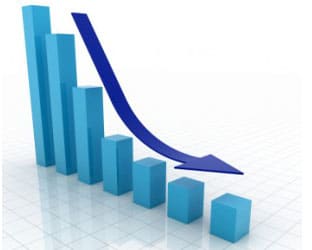We’ve heard the woes about local digital’s wrath on the broadcast radio industry in the U.S., and the various solutions to the matter — deregulation, and less owner diversity, among the ideas being supported by groups such as the National Association of Broadcasters (NAB) and key FCC rulemakers such as Mike O’Reilly.
Perhaps those calls for consolidation in the absence of federal digital media regulatory policy that mirrors that for broadcast media will only get louder, given the revised 2020 local radio ad forecast BIA Advisory Services just released.
BIA’s new ’20 forecast is specifically tied to a reduction in its early Q2 2020 forecast for U.S. local radio advertising, owing to the COVID-19 pandemic and its negative economic impact.
The new revenue estimate is $12.8 billion.
This reflects $11.4 billion for over-the-air revenue and $1.4 billion for digital revenue (including local advertising sold by streaming companies).
As such, $1.5 billion in lost revenue is now forecast as the COVID-19 pandemic’s sales sickness result.
And, the new estimate makes 2019 look that much better — not a good sign for Radio in a year when political ad revenue is expected to be a big boon for some companies across the second half of the 2020 calendar year.
For all of last year, local radio stations generated $12.8 billion in over-the-air revenue and just over $1 billion in digital.
This was a 1.6% decrease in total revenue from 2018. For 2020, a 7.25% year-over-year revenue was seen.
As such, radio has shed $1.22 billion in revenue in the last two years.
Those figures, of course, factor in digital. Subtract that, and the picture is far from rosy.
The 2020 revenue estimate indicates a 10.7% decrease in over the air advertising revenue from 2019.
- Finance/Insurance: $2 billion
- Retail: $1.97 billion
- Automotive: $1.50 billion
- Technology: $1.30 billion
As BIA sees it, these industries may benefit from a shift in radio listening from the car to the home as at-home audio choices can give consumers “multiple opportunities” to consume promotions. “Streaming has become a major growth opportunity for broadcasters to maintain existing audiences and attract new, younger listeners,” BIA says.
Of course, the definition of streaming includes Pandora, Spotify, podcasts and audio sources that go beyond the AM and FM radio station’s main over-the-air programming. While COVID-19 shelter-at-home restrictions did indeed result in big gains in radio station streaming consumption in multiple markets, the increase by number of individuals was far lower than the decrease in number of people tuning to traditional radio — suggesting that Time Spent Listening among fewer total radio listeners is the pandemic paradigm for an industry in desperate need of revenue.
In fact, BIA Managing Director Rick Ducey says “audiences are spending more time on streaming and podcasting in ways they haven’t in pre-pandemic times. These new audio habits are likely to take root and grow over time and advertisers will look to all platforms to promote their message. Radio sellers who see and respond to the audience and advertiser acceleration to digital audio with new formats, content and appeal for different demo groups will see better-than-average performances.”
Therefore, digital audio will continue to grow and attract ears. What remains to be seen is how broadcast radio works to add dollars in this arena, while the industry’s corporate owners debate the merits of further consolidation as a solution to long-term woes that aren’t about to get better anytime soon.





